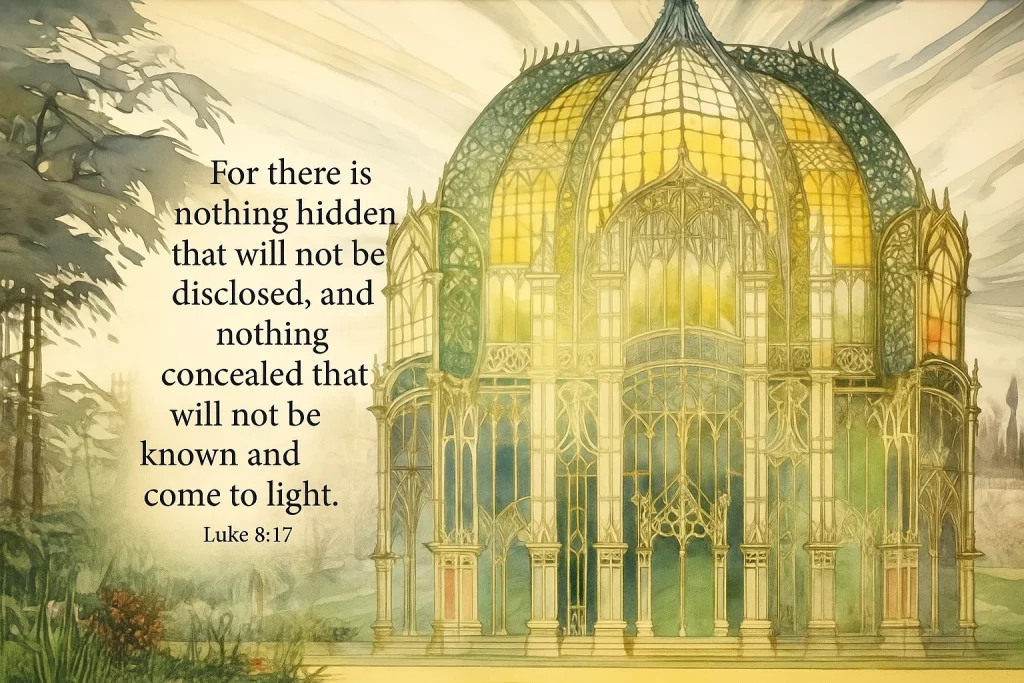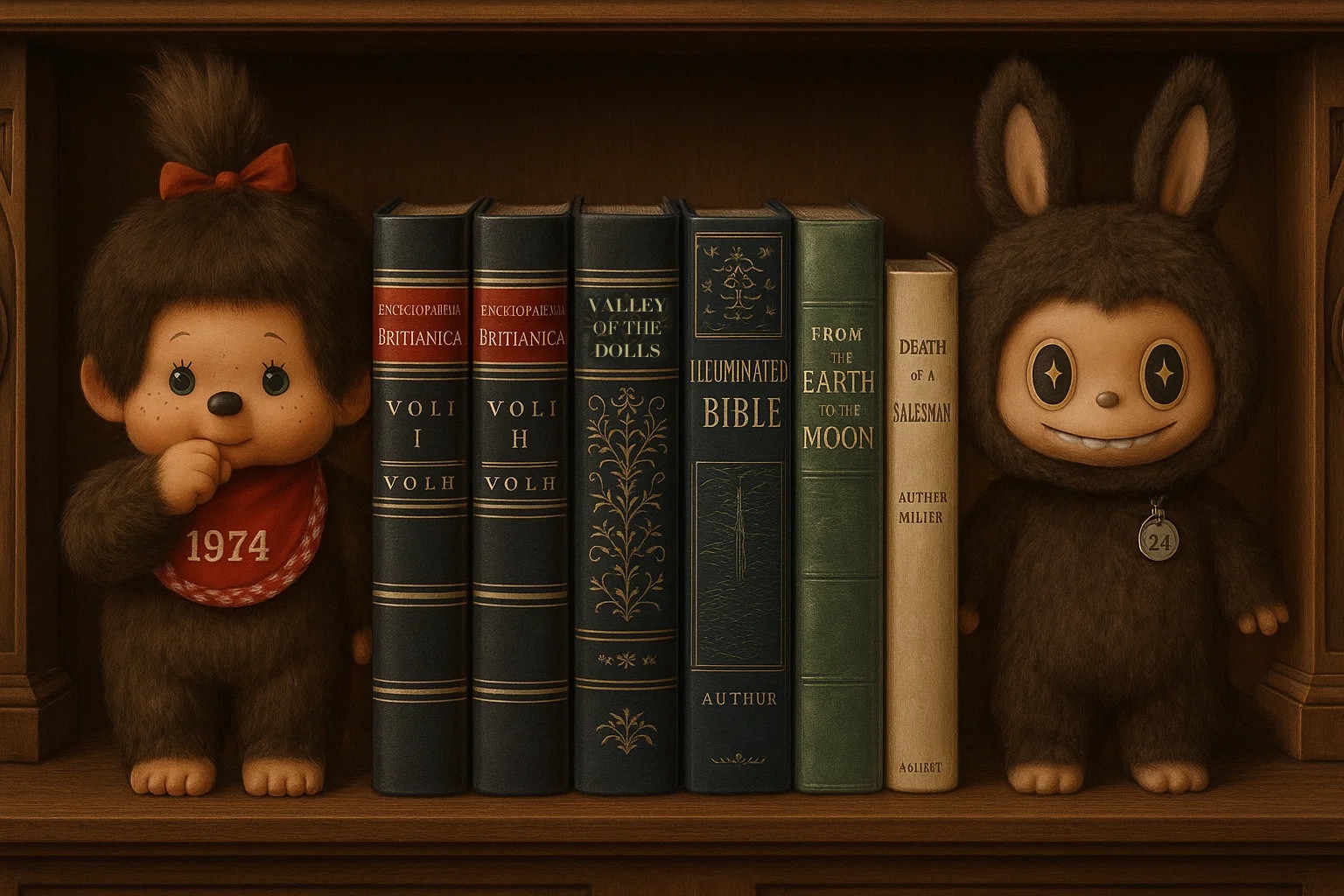FEATURED IMAGE CREDIT: This image was generated with Sora 4o based on historical images.
There is currently a psyop involving Labubu dolls in the United States. The video I share ties the Labubu craze to an apparent increase in missing youths in Virginia. There is always a sudden jump in missing children during the summer in a contained geographic area. People who notice are repressed as conspiracy theory fantasists, which is upsetting to people who care.
This video brings together three main themes I will address in this blog post. None of the people I will discuss in this article are involved in nefarious activities. I research and talk about longstanding law enforcement operations by international groups which are entirely reported in the public record going back hundreds of years.
The truth is obscured by lack of national reporting and by online conspiracy theorists who call themselves Truthers, who focus on the idea that there are secrets and that we are being lied to, while repeating the propaganda put out by the Ghost Army of the United States, a service tasked with misleading the enemy in times of war.
There are no secrets and if you can believe that, you will find truth when you scratch a tiny bit at the shallow psyops deployed every year.
The Missing Children
There is NEVER an explanation as to why young people go missing during the summer in a specific area. I had explored this phenomenon in 2018 but it simply resulted in me learning that most people DGAF.
After 2018, I continued to study this administratively observable phenomenon in secret and discovered something astounding. An administratively observable phenomenon is when an official source provides the data in public. The video shows how YOU can look into the NICMIC database and see how many young people are missing in your area.
Listen to NotebookLM react to this article draft (40 mins)
You can observe that these cases will be closed once school starts again. The audio about the draft version of this article goes into WHY this psyop is redone each year. However, in this moment, Virginia has a Lugubrious Ice Cream Truck parading into the night, which indicates that this will likely be the last time this psyop is pulled. Notice how this is occurring at the same time as Washington D.C. is under Federal lockdown.
Remember Pizzagate? This summer psyop from 2016 concerned the private e-mails of John Podesta, whose relative Brian is a special consultant at NICMIC. In the e-mails, John’s brother Tony says that he needs to “rent a pizza for 1 hour” around lunchtime. This e-mail clearly indicates that pizza is a code word for a time-based activity related to food. In reality the word pizza is code for compounds extracted from young people (blood, CSF). People were misdirected to think all food euphemism for young people were related to pedophilia and not… food. It worked very well. It allowed law enforcement to dismiss the posts by unaware and misinformed people, and concentrate on people who want to trade in illicit goods. The Pizzagate moment was announced on June 1, 2011 by the most important assets of The Ghost Army. This semi-secret unit with tens of thousands of soldiers, announces their operations 100, 50, 25 and 5 years in advance.
Then, the official signal of the end of trading in human byproducts came in 2017. It is impossible to get anybody to see this as significant because the media never reported on this, and even an AI calls it alleged. The treasury released the list of people whose assets were frozen… thousands of people. Even though the media makes sure to never report newsworthy facts, the government agencies still report their work, in their Reading Room or Press Release archive.
In the film Spinal Tap, which references the harvest of CSF, there is a plot line where the drummer of the group explodes on stage. This is a spoof of what happens to consumers of human byproducts. If consumers don’t maintain their Santa Clarita Diet, they start to burn from the inside. There’s nothing spontaneous about combustion, it takes weeks!! God has already prepared a solution for these people, it is the Hell inside them. Dying from lack of human byproducts, by slowly burning from the inside, might just be the most painful way to die. Therefore, consumers fall into a strange category… they cannot control how they become despondent and violent when their sustenance is removed. Pop culture makes fun of the “dying” vampire as the zombie. Vampires know who they are, and they’ve been jerked around for decades via films and TV Shows like The Walking Dead. It behooves the authorities to detect and remove these people as soon as possible, because their combustion might have burned down the city before it was time for Burn, Hollywood Burn, in January 2025.
In The Simpsons, this princess is reported via the storylines related to The Itchy & Scratchy Show. Have you seen public officials or actors show how itchy and scratchy they are?
The Unbelievability
I know the stuff I tell you is unbelievable. And it’s on purpose. I’m reporting on operations which are designed to sound unbelievable to the casual observer. Of course, the Lords and Ladies of The Unbelievability, who enjoy my content, have seen dozens of demonstration of slightly obscured operations so they understand the process… but a casual observer is meant to go away, when they stumble upon the truth. I have studied over 8,000 events involving over 17,000 people, so I have passed the threshold of unbelievability. There’s a lot of reasons why BEYOND everything that you witness. And everything you see is delivered to you via Double Entendre. You get to choose whether you accept the editorialized version of a story, or seek out the inside joke that is embedded in every piece of entertainment or misinformation.

Double Entendre
You have been educated to disbelieve reality on purpose because the truth is dark. I consume the truth via the study of law enforcement operations. It provides a sense of closure. Our job is to be freedom-loving people who take for granted that vampires don’t exist, that cannibalism is gross and that slavery ended long ago. Even if this isn’t true, it represent the normality of the future whence all entities who abuse humanity have been removed from the playing field. This will lead to 1,000 years of peace.
The culture that has been encouraged in the last 10 years is “crazy” people giving into late-stage consumerism. Nevertheless, I sincerely feel that most people are very close to The Good Place, in this moment. We can’t judge the population by looking at the most starved loud people. Algos prioritize dysfunction and Mainstream Media obsesses about Edge Cases that don’t represent the majority of people at all, remember that!
Lububu, the official craze of Summer 2025
The novel signifier in 2025 is the Labubu doll craze. This craze is an entirely manufactured event and NOT an organic “falling in love”. The way this product is marketed and sold is very purposeful. It is meant to hook people who have gone beyond buying what they don’t need, and are now spending thousands of dollars buying what they don’t want, in the hopes of getting that special rare doll. This mirrors the plight of the human consumers. They are always looking for that special baby whose byproducts will revive them best.
This craze is a purposeful manipulation of flaws in the human operating system. Rather than be repressed, people are proactively encouraged to display these behaviors in 2D (Social Media). People who were raised entirely on consumer culture are the target of the Lububu craze. 2D is the incarnation plane of oversharing and it was created for the purpose of investigating human consciousness. Just like partisan, or stupid, crazy is not a scientific term or a diagnosis… it’s based of what people do when whipped up into a frenzy to assign value to something. It’s a flaw in the operating system that makes people easier to abuse or harvest.
CRAZY
cra·zy /ˈkrāzē/
INFORMAL
adjective
1. mentally deranged, especially as manifested in a wild or aggressive way.
The word crazy harkens back to The Tulip Craze of the past where Dutch people lost their entire fortune because of buying Turkish flower bulbs erasing their generational wealth in the process. But there’s more to crazy… the aggressive part.
Humans are recognized as dangerous. We tend to react violently and “shoot now and ask questions later”. Non-humans who watch over us are deftly afraid of humanity, hence why we NEVER meet them. Before First Contact with our Old Friends, we must gain an understanding of who we are. Hence why thousands of actors are playing out storylines that manifest Luke 8:17. We have a covenant with our stakeholders to express every truth there is about humanity. Often, that means exposing why we have been considered unsuitable for galactic citizenry. The ultimate goal of our purposefully created culture is to produce Diplomats who have witnessed expressions of all manners of conflict resolution, via culture, only to emerge FEARLESS and GRATEFUL not ANGRY and BITTER.
The people who focus on the fact that they’ve been lied to about secrets do not make this cut, because there are no secrets and the public record is already full of the truth.
The late-stage consumer mindset has been well displayed in the past 10 years where people who take everything about themselves from the outside feel comfortable explaining themselves on social media. The current cycle is showing us who is a Crazy Consumer via the buying of a specially designed doll that harkens back to Pazuzu. Pazuzu is the last demon vanquished from the old world before SATAN became the only demon poseur people are allowed to manifest.
Pazuzu represents the unchecked consumption of humanity by monsters just before the Mesopotamian reboot of civilization 4,500 years ago. This is an audit of humanity’s consciousness, so please keep gossiping on TikTok, Big Brother is watching you. I appreciate that Labubu is honest about what it is… an idol. Every doll anybody ever got was also an idol by the way. Every bobble head, every figurine, and every thumb sucking fluff puff.
The Manifestation Team
Happy birthday to the founder of Pop Mart,
Wang Ning, born on this day August 17, or 8/17, the perfect day for people brining about LUKE 8:17.

Born on August 17, 1987 Wang NingFounder of Pop Mart |
Born on December 31, 1972 Kasing LungLabubu Designer |

The Demon Doll: Annabelle’s Keeper Passes Away…
The original video mentions the best person for the job of explaining what a demonic doll really is, Dan Rivera. Unfortunately, he passed in July, but his origin story lives on, as he embarks on his next adventure.

Born on November 17, 1970 (1970 - 2025) Dan RiveraCaretaker of the infamous haunted Annabelle doll |
Consumer goods are symbols used by celebrities to celebrate their team. The same thing can be said about costumes. I have pulled up the list of all people who are showing the end of their national security cycle via People magazine. This magazine has been following the work of highly visible investigators who manage People Who Need People down a corridor to their doom. Watch this space for links to their profile, just like I have contextualized Dan Rivera.
People mentioned in the Labubu search result titles on the People website:
- BLACKPINK’s Lisa (from “Simone Biles Shows Off Her High-Fashion Labubu Dolls — and Hailey Bieber Is a Fan” and other titles)
- Hailey Bieber (in the same title alongside Simone Biles)
- Liam Neeson (“Liam Neeson Goes Viral for His Unexpected Answer to ‘What Is a Labubu?’”)
- Simone Biles (“Simone Biles Shows Off Her High-Fashion Labubu Dolls — and Hailey Bieber Is a Fan”)
- Robin Roberts (in “Robin Roberts Disses Michael Strahan’s Teeth amid Playful On-Air Feud…”; though tangential to Labubu, present in the list)
Michael Strahan (same title as above) - Chloe Fineman (“Chloe Fineman Teases What She’s Shopping…”)
- Tom Brady (“Tom Brady Reflects on ‘Amazing’ Japan Trip…” and also appears in another title)
- Teddi Mellencamp (“Teddi Mellencamp Celebrates 44th Birthday…”)
- Jared Leto (“Jared Leto & Jeff Bridges Tease Tron…”)
- Jeff Bridges (same title with Jared Leto)
- Alison Brie (same Tron-themed title)
- Dave Franco (same title)
- Elle Fanning (same title)
- Jamie Lee Curtis (“Jamie Lee Curtis and Lindsay Lohan Bring Freaky Fun…”)
- Lindsay Lohan (same title with Jamie Lee Curtis)
- Anne Hathaway (same title)
- Sofia Carson (same title)
- Ryan Gosling (“Ryan Gosling Arrives at San Diego Comic-Con…”)
- Sterling K. Brown (same title with Ryan Gosling)
- Jacob Anderson (same title)
- Sam Reid (same title)
- Keke Palmer (“Keke Palmer Flaunts Cash Bills…”)
- Beyoncé (same title with Keke Palmer)
- Destiny’s Child (same title)
- Pete Davidson (same title)
- Lady Gaga (“Lady Gaga Is a Star on the Stage in California…”)
- Pamela Anderson (same title)
- Liam Neeson (again in that title)
- Joe Jonas (“Joe Jonas Admits One Thing He’s Had to Learn Since Becoming a Girl Dad”)
- Daniel (Liam Neeson’s son, in news but not in titles other than the lengthy article; appears in context but not title)
Other titles in the search results list mention Labubu-related topics but do not include personal names in their titles. For example:
- “Labubu Isn’t Just Gen Alpha’s Latest Obsession…”
- “A Labubu Collector Spent $300 on 1 Plush…”
- “What Are Labubu Dolls? All About the Bag Charms…”
- “Labubu Fans Can Now Order Tiny Couture Wedding Dresses…”
- “4-Foot-Tall Labubu Doll Sells at Auction for $170,000…”





